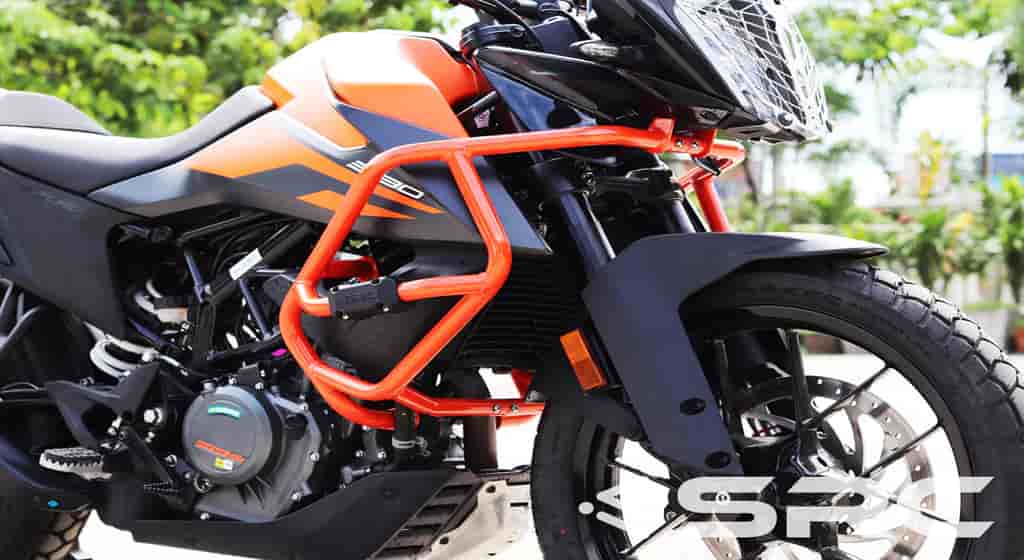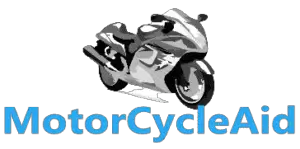A crash bar, also known as a freeway bar, highway bar, or engine guard, is typically made of chrome-plated stainless steel. The bike’s lower frame contains two pieces mounted to each side. They are mounted to the lower frame with screws. While providing a safety feature for riders and minimizing damage to bikes, the bar also protects the bike’s fuel tank and engine.
Define Crash Bars
Motorcycle crash bars attach to a motorcycle’s frame for safety. It consists of a metal bar that sticks out beyond the motorcycle, but how it is designed varies. As well as preventing the bike from falling completely over, it provides some protection for the rider in the event the bike crashes and crushes them.

Materials of Crash Bars
A crash bar’s material determines both how well it works and how much it costs. Mild steel, aluminum, and stainless steel are the three most common materials, and each has its own advantages and disadvantages.
Stainless Steel: The material is non corrosive, so if you ride in areas where it rains a lot or where river crossings are common, you should use stainless steel. But stainless steel is brittle and does not adapt easily to impacts and transfers more energy to the bike’s frame and engine than a material that has some give. Besides cracking at the welds from engine vibration, its brittleness makes it more susceptible to cracking.
Aluminum: Due to the light weight of aluminum, the bike does not add much weight. Although it’s more expensive and harder to work with, it is not as strong as either kind of steel. The only positive attribute of aluminum is that it does not rust.
Mild Steel: It is quite inexpensive to build a bicycle out of mild steel, and it is strong enough to protect the bike, yet flexible enough to bend without breaking. Mild steel rusting is one of its disadvantages, but it can be easily dealt with by applying a corrosion preventative before powder coating. The damaged spot will eventually rust, if the surface finish is scraped off down to bare metal.
Crash Bar Workflow
When thrown from their bikes in a collision, motorcycle crash bars protect the rider, & they can prevent the motorbike from falling on them. The crash bars can protect valuable and costly motorcycle components, and some riders invest more in the bars to protect the bike rather than themselves.
Crash bars for motorcycles help prevent extensive damage if they fall over while parked or if they tip over at low speeds. You can save the paint on your bike with bars since they protect the engine and fuel tank.
Construction Process of Crash Bars
For the highest strength and lowest weight, it is necessary to combine outside diameter and wall thickness to get the right combination of tube diameter and wall thickness. Larger tubes are stronger regardless of wall thickness, but they expose more surface area to potential damage, and thin walls lose strength wherever they are dented. Tubing with small diameters and thick walls may be preferred by some manufacturers, while tubing with thin walls may be preferred by others.
You cannot mount the crash bars too thickly on the engine or frame, or the impact energy will go straight to the mounting points. Their strength must be sufficient to resist bending, but they must be flexible as well.
An effective crash bar should protect the bike while still allowing routine maintenance like oil changes and air cleaner servicing, and without preventing removal of common body panels. They should not reduce cornering or ground clearance to increase the chances of the crashes they are supposed to prevent.
Crash Bars Safety
Prevent from Leg Injury: Motorcyclists sustain debilitating injuries due to lower leg trauma. Riders’ legs can become pinned under the weight of the bike if the motorcycle goes down during a wreck. As a result of the motor or exhaust being trapped against the rider’s leg, burns are also common. With the help of motorcycle crash bars, riders can be protected from being pinned under the weight of the motorcycle.
A motorcycle can also be picked up easier with these bars, which is a safety feature. A rider can move the bike quickly and easily after an accident if they are not seriously injured.
Give Enough Time for Response Teams: The purpose of crash bars is to improve the safety of the rider. Crash bars have been shown to help reduce lower leg injuries, and anecdotal evidence indicates they may prevent the bike from crashing onto the rider in an accident. First responders can render aid easier if the rider is injured while they lift the bike away from him.
Gas Tank Protection: Motorcycle gas tanks are lightweight for practical reasons. During a motorcycle crash, puncturing the gas tank poses a very real risk of fire, which could endanger those attempting to render aid to the rider. Crash bars for motorcycles do not guarantee that punctures will not occur, but they reduce the likelihood of fuel spilling from punctures in motorcycle accidents.
Importance of Crash Bar on Motorcycle
Several companies manufacture crash bars as aftermarket accessories, including BMW and Harley Davidson. They are easy to install, and they are worth the price of preventing damage to the bike in the event of a tip over. Crash Bars are an attractive and inexpensive way for motorcycle riders to ensure their safety. In order to reduce the risk of injury, installing an aftermarket safety feature can reduce healing time and even end your ability to ride.
You must keep in mind that crash bars are only one safety tool in your arsenal. It is important to take a riding course, ride responsibly, and wear safety gear at all times. A crash bar won’t guarantee that you will not harm yourself or your motorcycle in an accident, but it will protect your motorcycle and your legs from injury.
Alternatives Motorcycle Safety Tools
To enhance the styling and safety of your motorcycle, you can also purchase several other accessories. Footpeg, footrest, or highway pegs are the most obvious ones. You may also want to consider bars and plates that will bulk out your bike and protect it from accidents if you are in the market for safety accessories.
Upper Crash Bars: Stainless steel upper crash bars are designed to protect your radiator during a tip over. Upper crash bars take the form of a single large chrome plated bar that extends across both sides of the motorcycle instead of two small loops. In addition, upper crash bars increase the diameter of the bike, making it feel safer when you are riding.
Frame Sliders: Frame sliders are also often used as fairing protectors to further prevent damage to a bike’s frame. Frame sliders protect vulnerable areas of the frame much like engine guards do for motorcycle engines. You can save a lot of money when you install both crash bars and frame sliders on your bike in case you crash.
Skid Plates: As a last step, a skid plate adds protection to the underside of your motorcycle in case it slides. Motorcyclists and motorcycles both hit the pavement during a low side crash, so skid plates are especially helpful. In spite of the fact that a skid plate will not prevent leg injuries, it will safeguard the frame of the bike.
